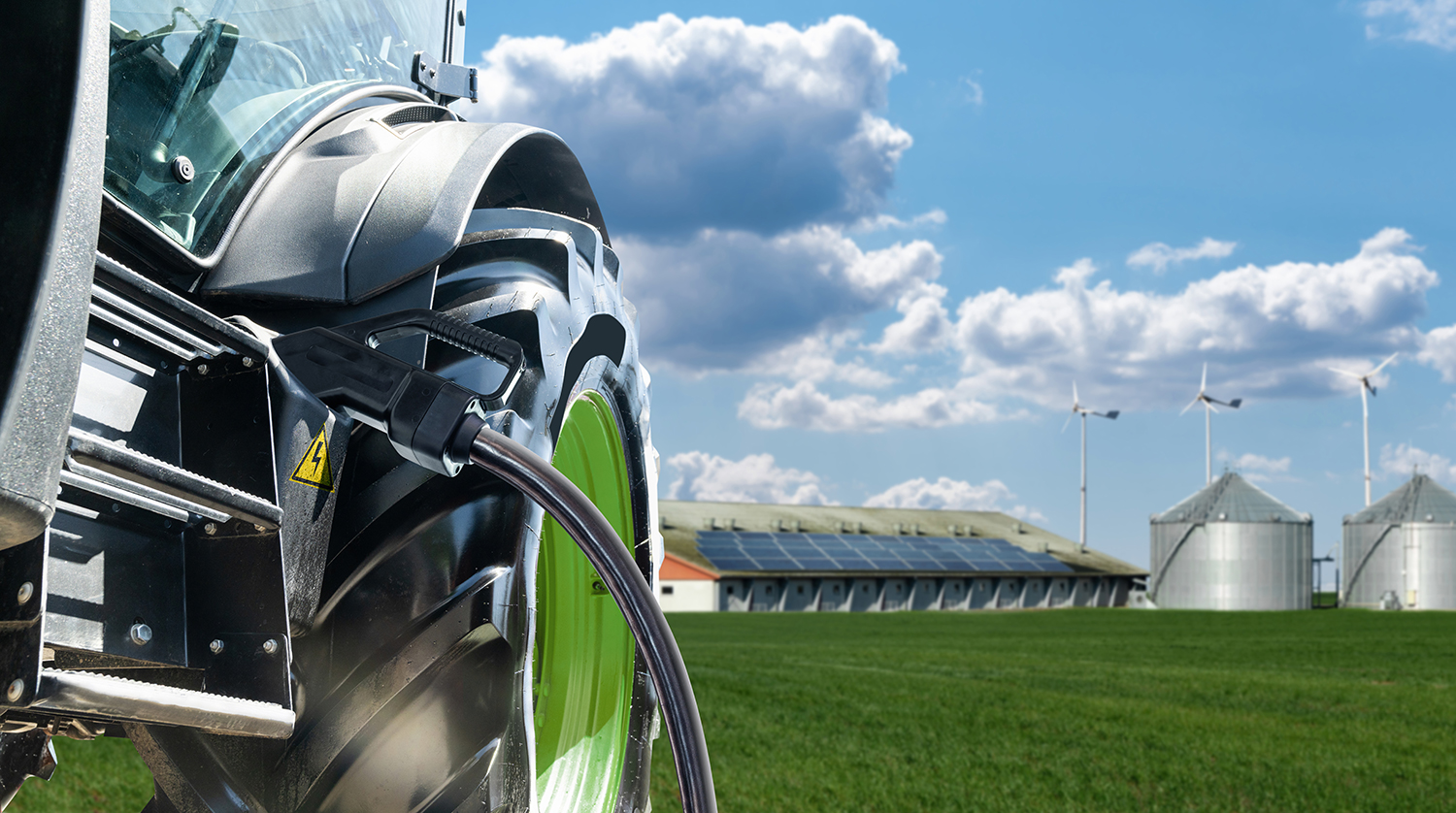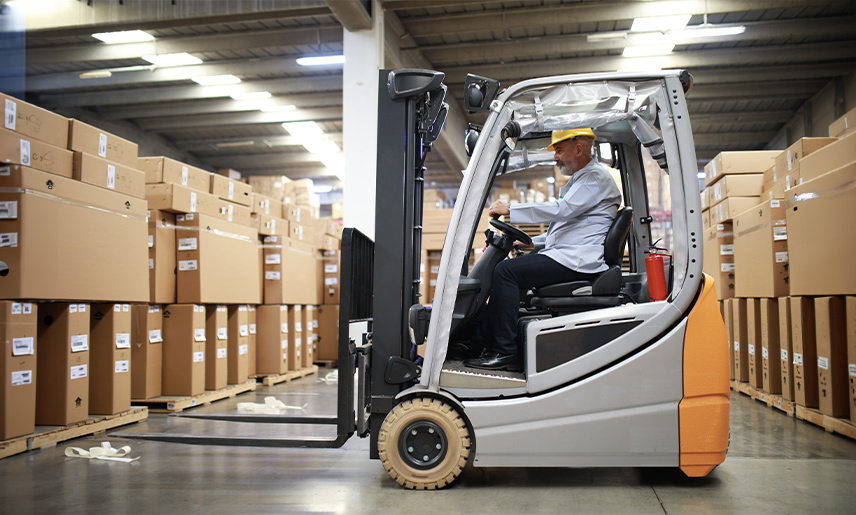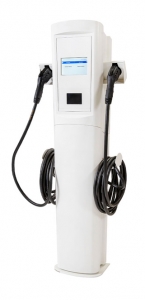
The growing popularity of electric vehicles in our garages and within fleets is well understood today. We can all see it ourselves on every trip we take to the grocery store: EVs are becoming commonplace in transportation today.
However, that same drive toward electric vehicles extends beyond car and truck transport to agriculture. Despite other industry sectors having a larger carbon footprint, the electric farm equipment can help reduce the environmental impact and pose other potential benefits to the land and the landowners and operators. Electrifying agricultural equipment can reduce noise pollution, maintenance, and parts replacement due to the electric motor design. Tractors especially benefit from the instant torque delivery supplied by electric motors.
Efforts to reduce carbon emissions in the agricultural sector could have a meaningful impact. The percentage of the American population that works in agriculture and related industries is approximately 10.4%, according to the USDA Economic Research Service ERS. Farming activities almost equal that percentage in terms of contributions to greenhouse gas (GHG) emissions, estimated at 10.6%.
Farm tractors are far from the only type of ag equipment moving towards an electric farm equipment model, but they are the most representative of farming and agriculture. However, significant practical challenges grounded in operational realities slow this transition. Combines and tractors, for example, require extended, uninterrupted operation of 18 to even 24 hours during harvest time. Another factor is that the equipment might work continuously across multiple farms without returning to a central location, challenging implementing traditional charging approaches.
Current diesel-powered engines allow for quick refueling that takes minutes, compared to the hours-long charging required for battery-electric equivalents, considering the battery size required for larger equipment such as a combine. Additionally, the weight of batteries necessary to match diesel’s energy capacity could compromise the machine’s performance, ground pressure distribution (compacting the soil), and overall efficiency.

Looking beyond tractors: powering the electric farm equipment
While full electrification of sizeable agricultural machinery remains challenging, the sector is progressively exploring electric alternatives for various equipment types. Modern agricultural operations utilize a complex ecosystem of equipment beyond combines and tractors. Smaller, more specialized machines like forklifts and telehandlers (used for moving heavy loads to various heights) are leading the way in agricultural electrification, demonstrating the potential for electric technologies to transform farm operations.
Forklifts and telehandlers serve multiple functions in an agricultural setting. Forklifts can move heavy items like hay bales, animal feed, or building materials, similar to their use in warehouses. All-terrain features incorporated into forklift designs help navigate muddy fields and farmyards. The transition to electric forklifts in agriculture is already well underway, with electric-powered forklifts comprising 64% of the North American lift truck market.
Ag operations increasingly turn to telehandlers for their versatility, which allows farmers to lift, transport, and position items such as hay bales. The telehandler acts like a combination of a forklift and crane, with an extended boom that allows them to reach high places. This type of equipment, used seasonally or for predictable shift-style work, can be recharged using standard EV charging equipment installed on-site on the farm.
Ag operations increasingly turn to telehandlers for their versatility, which allows farmers to lift, transport, and position items such as hay bales. The telehandler acts like a combination of a forklift and crane, with an extended boom that allows them to reach high places.
Electric ATVs are gaining popularity for monitoring livestock, transporting supplies, and performing tasks with a more rapid response in areas that might be inaccessible to larger vehicles. The compact size means an ATV is often outfitted with a smaller battery pack.
Due to their modest battery capacity and predictable or intermittent usage patterns, these types of equipment can be recharged using L2 EV charging equipment installed on-site on the farm.

The different electric farm equipment types utilized in agricultural operations mean electrification will likely happen in waves. Smaller farm vehicles will likely be first, with more manageable power requirements and charging needs. Electric ATVS, utility vehicles, or forklifts have predictable usage patterns and are often parked in a central location between tasks, making them ideal candidates for an electrified version.
Next in line would be small to mid-sized tractors, used for shorter durations or returned to a central location with regularity. These have motors that are lower horsepower than a combine or larger tractor, for example. Their adoption is growing in segments like vineyard and orchard management.
The path to large-scale electrification
While smaller equipment shows more immediate promise for electrification, major manufacturers are actively working to solve the challenges posed by larger machinery. This development process requires significant infrastructure investment at three key points: manufacturing facilities, dealerships, and farms. Each of these environments presents unique challenges and opportunities for implementing charging solutions.
-
Manufacturing and R&D facilities represent the first critical point of EV charging infrastructure development. Various original equipment manufacturers (OEMs) like John Deere, Massey Ferguson, and New Holland have announced upcoming electric tractor models, necessitating robust testing environments.1 These facilities require comprehensive charging ecosystems that support current electric equipment while remaining adaptable to future innovations.
Manufacturing sites must implement high-capacity charging stations capable of handling multiple large vehicles simultaneously, supported by robust electrical systems and precise monitoring capabilities.
-
Agricultural equipment dealerships serve as the crucial middle ground in the electrification journey. These facilities must evolve beyond traditional sales and service centers to become comprehensive support hubs for electric agricultural technology.
Dealerships are uniquely positioned to serve as demonstration centers for emerging electric technologies, maintenance and diagnostic hubs, potential emergency charging locations, and educational platforms for farmers transitioning to electric equipment. Their charging infrastructure must be versatile enough to accommodate various equipment sizes and battery configurations while providing practical examples of how these systems can be implemented on working farms.

BLOG
Looking for answers to your fleet FAQs?
We have answers! Read the blog: FAQs for Fleet Owner/Operators.
-
Large corporate farms and individual agricultural operations represent the most complex charging environment. Charging systems on working farms must withstand harsh environmental conditions while providing rapid charging during critical operational windows. These systems must integrate seamlessly with existing farm electrical infrastructure while supporting multiple equipment types and battery systems.
The success of on-farm charging solutions depends on their ability to enhance overall farm productivity and efficiency. Farmers need systems that minimize downtime during crucial agricultural cycles while providing clear economic benefits through reduced operational costs and improved equipment performance.
Customer charging solution overview: Agricultural charging solutions
BTC POWER’s charging solutions are engineered to meet the unique demands of agricultural environments, offering Level 2 and Level 3 DC Fast Charging options designed to withstand harsh farm conditions and operate reliably in remote locations.
DC Fast Charging for Electric Farm Equipment
The Level 3 Gen 4 All-in-One (AiO) DC Fast Charger brings industrial-grade charging capability to agricultural operations with features specifically valuable for farm implementations:
- Ruggedized Design
- NEMA 3R rated weatherproof enclosure to withstand dust, rain, and harsh environmental conditions
- Operating temperature range suitable for most outdoor farm installations
- Robust construction for reliable operation in challenging agricultural environments
- Operational Flexibility
- Multiple charging ports to support different equipment types simultaneously
- Scalable power delivery up to 350kW for future high-capacity farm equipment
- Smart power management to balance charging loads with other farm operations
- Remote monitoring and diagnostics to minimize downtime during critical farming periods
- Installation Considerations
- Flexible mounting options for both permanent and mobile installations
- Built-in surge protection for rural power grid variations

L2 EV charging station with dual ports
BTC POWER’s Level 2 EV chargers are ideal for overnight charging of smaller agricultural equipment and provide:
- Agricultural Implementation Benefits
- Suitable for charging during equipment maintenance periods
- Multiple units can be networked to create charging hubs in equipment storage areas
- Load-sharing capabilities to optimize available power capacity
- Durable construction for barn and outdoor installation
- Practical Features for Farm Use
- Integration with farm management systems for usage tracking
- Time-of-use pricing capability to leverage off-peak rural electricity rates
- Remote monitoring to track charging status across large acreage or multiple properties
Harvesting innovation – electrification is poised to cultivate the move to sustainable agriculture.
The successful implementation of agricultural EV charging infrastructure requires high collaboration between equipment manufacturers, charging technology providers like BTC POWER, electrical infrastructure experts, and agricultural operators. While the transition to electric agricultural equipment presents significant challenges, it offers compelling innovation and environmental stewardship opportunities.
As the agricultural sector navigates this complex transformation, the focus must remain on developing flexible, intelligent, and robust charging solutions that balance immediate operational needs with future technological potential.
The gradual transition will be driven by continuous technological advancements, improving economic feasibility, and strategic long-term planning considering the unique needs of agricultural operations at every scale. Dealerships, OEMs, and farm operators can rely on American-made EV charging manufacturers like BTC POWER to work with their unique charging requirements for the successful electrification of this vital industry.

